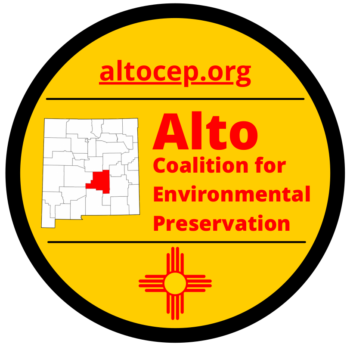Water Impacts are in for the NMED Batch Plant Hearing
Roper’s motion to disallow discussion of water issues has been denied by the Hearing Officer.
In Limine (in limb-in-ay) from Latin for “at the threshold,” referring to a motion before a trial begins.
STATE OF NEW MEXICO
BEFORE THE SECRETARY OF THE ENVIRONMENT
IN THE MATTER OF THE APPLICATION
OF ROPER CONTRUCTION INC. AQB 21-57(P)
FOR AN AIR QUALITY PERMIT
NO. 9295, ALTO CONCRETE BATCH PLANT
ORDER DENYING OPPOSED MOTION IN LIMINE
THIS MATTER came before the Hearing Officer on Roper Construction, Inc.’s (“Roper”) Motion in Limine to Exclude Evidence on Water Issues, filed on January 25, 2022, and having reviewed the Response in Opposition, filed by Ranches of Sonterra (“Sonterra”) on February 2, 2022, and Roper’s Reply filed on February 4, 2022, and being otherwise fully apprised, the Hearing Officer FINDS:
1. The evidentiary standard for admission of evidence in a permit hearing is relevancy.
20.1.4.400.B.1 NMAC.
2. Evidence is relevant if it has any tendency to make a fact more or less probable than it would be without the evidence, and the fact is of consequence in determining the action.
NMRA 11-401.
3. All testimony and documents that are not relevant, must be excluded from the Hearing Record as defined under 20.1.4.7 NMAC.
4. Under 20.1.4.400 NMAC, the Hearing Officer “shall admit all relevant evidence that is not unduly prejudicial or repetitious, or otherwise unreliable or of little probative value.” The Rule further clarifies that admissible evidence must be relevant to the “Draft Permit, Application, or Petition.” See 20.1.4.200.C.2 NMAC (notice of hearing); 20.1.4.300.B.1NMAC (technical written statements and oral testimony); 20.1.4.300.B.2 NMAC (general written and oral statements).
5. The Hearing Officer has the authority to grant this motion under 20.1.4.100.E.2 NMAC
(“[t]he Hearing Officer shall have authority to take all measures necessary for the maintenance of order and for the efficient, fair and impartial adjudication of issues arising
in proceedings governed by this part [including] . . . [to] rule upon motions”).
6. Roper moves the undersigned to exclude the introduction of evidence, testimony and exhibits relating to the following:
a. Ryan Roper and Roper Investments, Inc.’s Application for Permit to Use Underground Waters H-4700 (Attachment to Sonterra SOI).
b. The following opinions of Sonterra Witness Eluid Martinez:
i. Opinion A regarding a lack of identification of a water source and supply (Sonterra SOI at 12),
ii. Opinion B regarding a specific water source, livestock watering well application and permit, permitted uses of a livestock watering well, appropriations in the Hondo Underground Water Basin, transfers of water rights, and use of a water pipeline (Sonterra SOI at 12-13),
iii. Opinion C regarding the amount of water necessary to produce concrete and control emissions (Sonterra SOI at 13),
iv. Opinion D regarding existence of water storage tanks at the facility and water sources (Sonterra SOI at 13),
v. Opinion G regarding amount of water to be consumed (Sonterra SOI at 14),vi. Sonterra’s rebuttal testimony by Mr. Martinez addressing the water issues. (Sonterra Rebuttal SOI at 4-6), vii. Any other opinions, exhibits, or evidence offered by any Party relating to the water issues.
7. The New Mexico Environment Department (“NMED”) concurs with the Motion.
8. The NMED Secretary’s final order denying or approving the Draft Permit is centered on whether emissions from the facility, as permitted, will cause or contribute to an exceedance of applicable ambient air quality standards or applicable prevention of significant deterioration increments (“PSD”), or whether the facility will comply with all of the applicable regulations. See 20.2.72.208 NMAC (establishing the grounds for NMED denial of an air permit application).
9. The Draft Permit, therefore, requires Roper to use water to meet air quality standards.
10. NMED has the authority to impose reasonable conditions on Roper’s operation necessary for achieving compliance with applicable air quality regulations, ambient air quality
standards, and PSD increments. 20.2.72.210 NMAC.
11. NMED’s Air Quality Bureau (“Bureau”) has done so through a permit condition requiring the use of a wet dust suppression system. Based on the draft condition, Roper must have the ability to obtain the requisite amount of water to operate the dust suppression system, or it is prohibited from operating. It is through this mechanism that the Bureau can ensure that Roper achieves compliance with applicable air quality standards.
12. Specifically, the sole emission control method at four (4) of the regulated emission sources identified in the Application is the addition of water – at these sources. See Roper Application, August 25, 2021, Rev. No. 2, Table 2-A of Application; Roper Application, June 14, 2021, Rev. No. 0, Table 2-C of Application.
13. Thus, a “fact of consequence” is the availability of water in sufficient quantities to achieve emission control at the units identified in the Application and the Draft Permit.
Evidence that makes the availability of a sufficient quantity of water more or less probable is therefore relevant and shall be admitted to the Hearing Record and given the appropriate weight in the Hearing Officer’s Report and Recommended Decision.
IT IS THEREFORE ORDERED that Roper’s Motion is hereby DENIED. This Order in no way limits any Party from objecting to evidence at the hearing that is outside the scope of this Order.
IT IS FURTHER ORDERED as a preliminary matter, the Parties will offer their exhibits into evidence, notwithstanding any objections, as a preliminary matter before opening statements.
IT IS FURTHER ORDERED in accordance with the Scheduling Order filed as of record December 2, 2021, every witness shall adopt their prefiled direct testimony under oath and shall be limited to a fifteen (15) minute summary for the benefit of the public. Witnesses shall have an additional fifteen (15) minutes in which to present a summary of their rebuttal testimony immediately after their direct for a maximum of thirty (30) minutes. Witnesses may stand for cross-examination as a panel.
_______________________________
Gregory Chakalian, Hearing Officer
